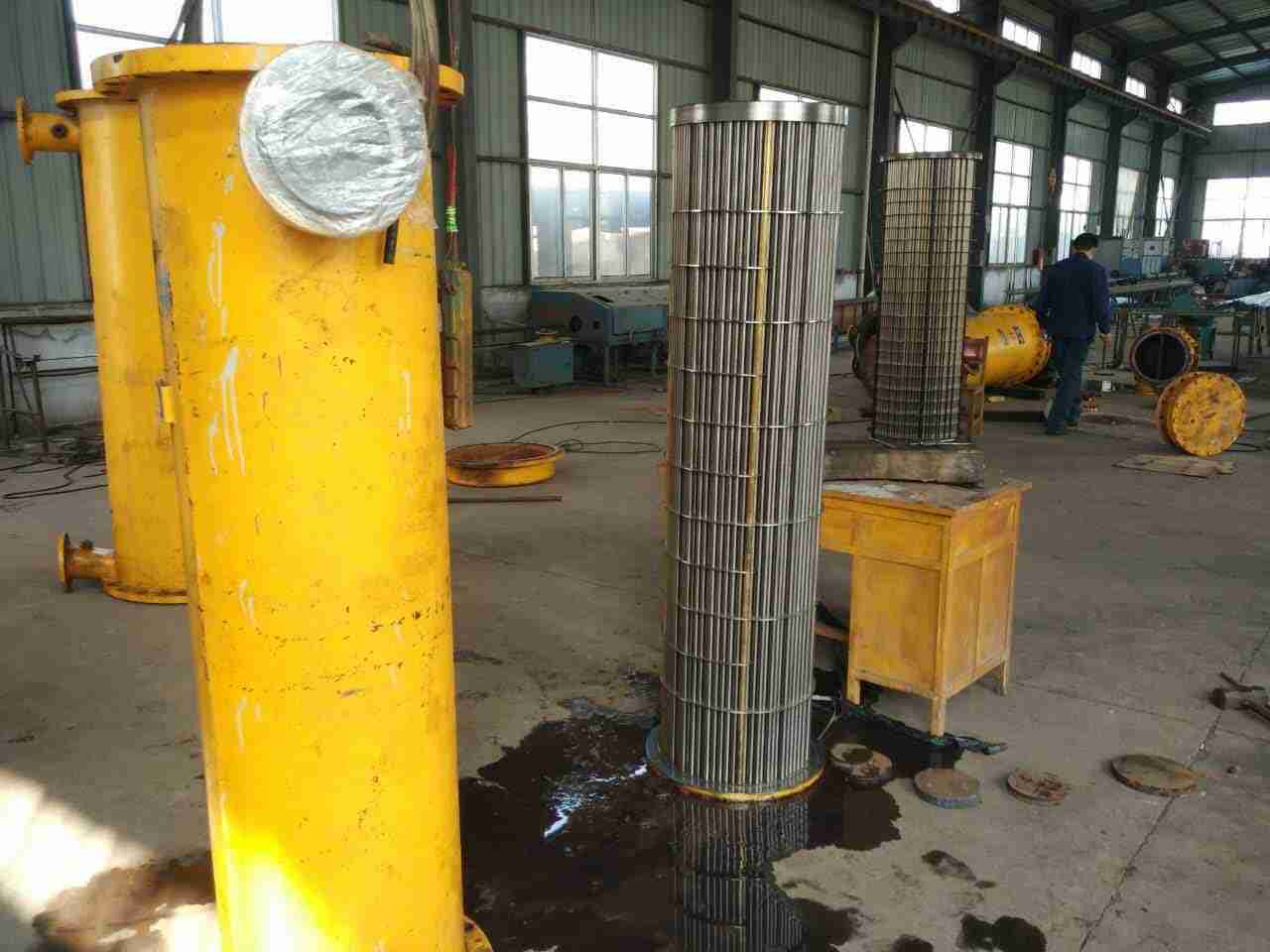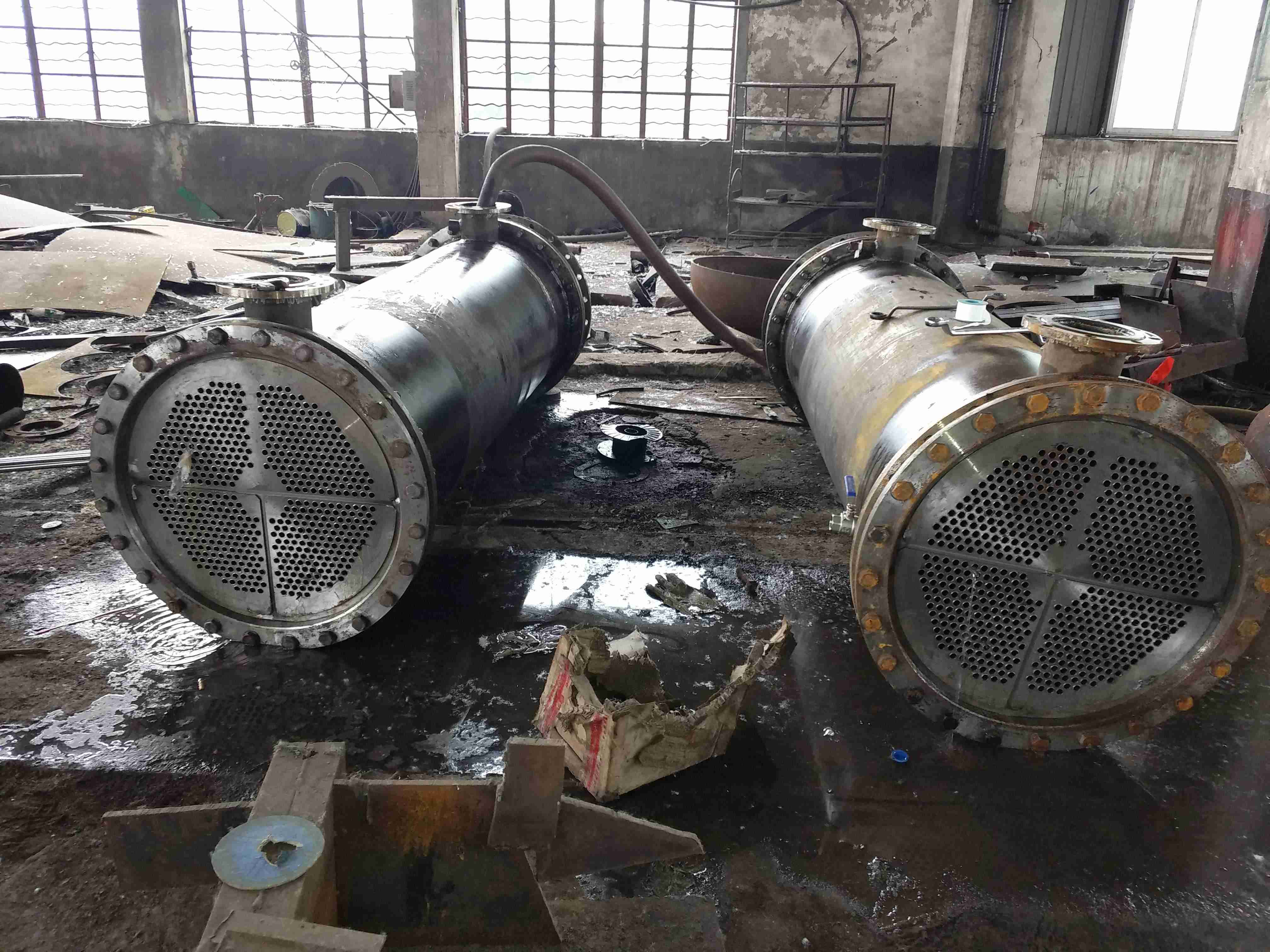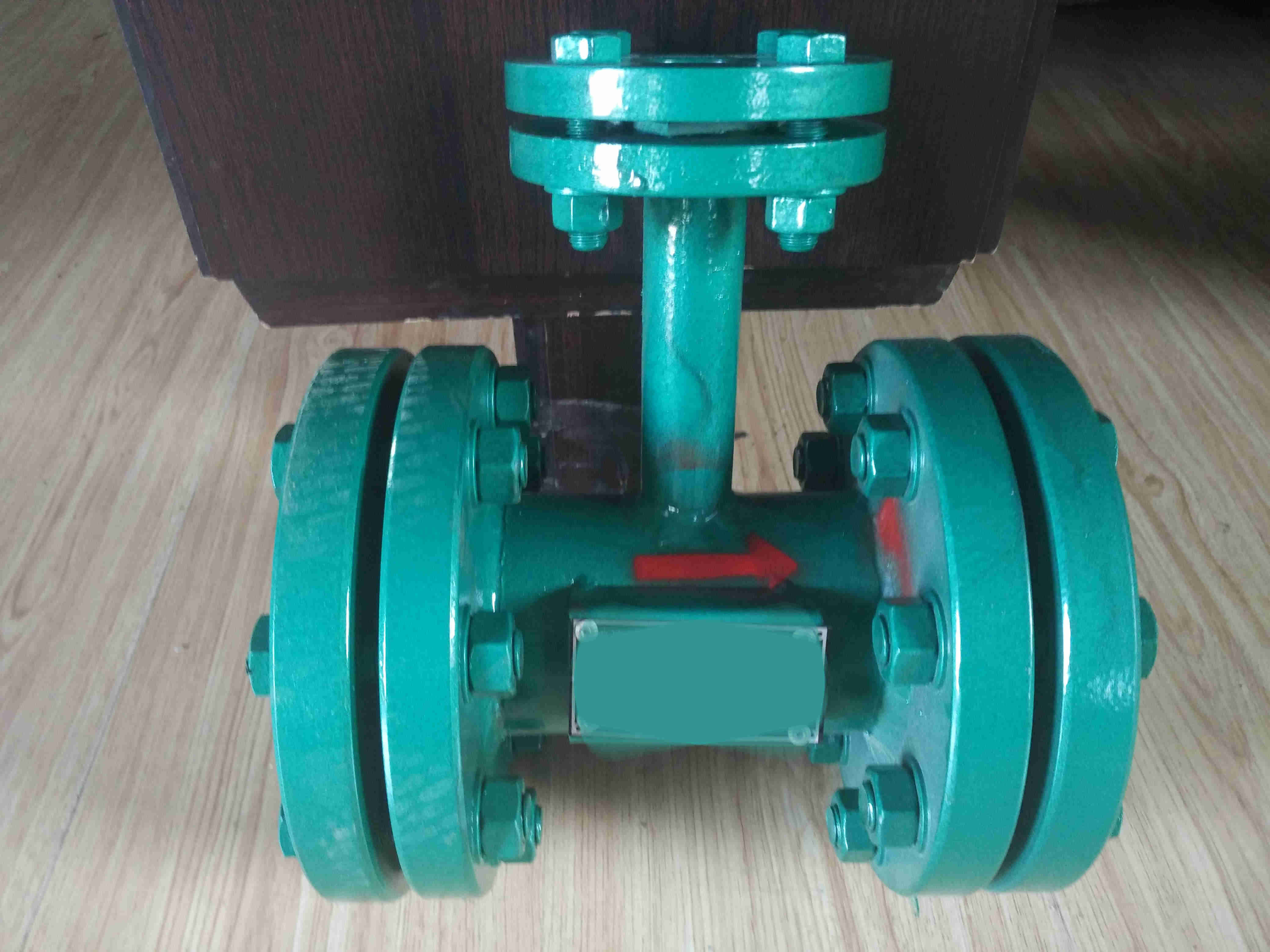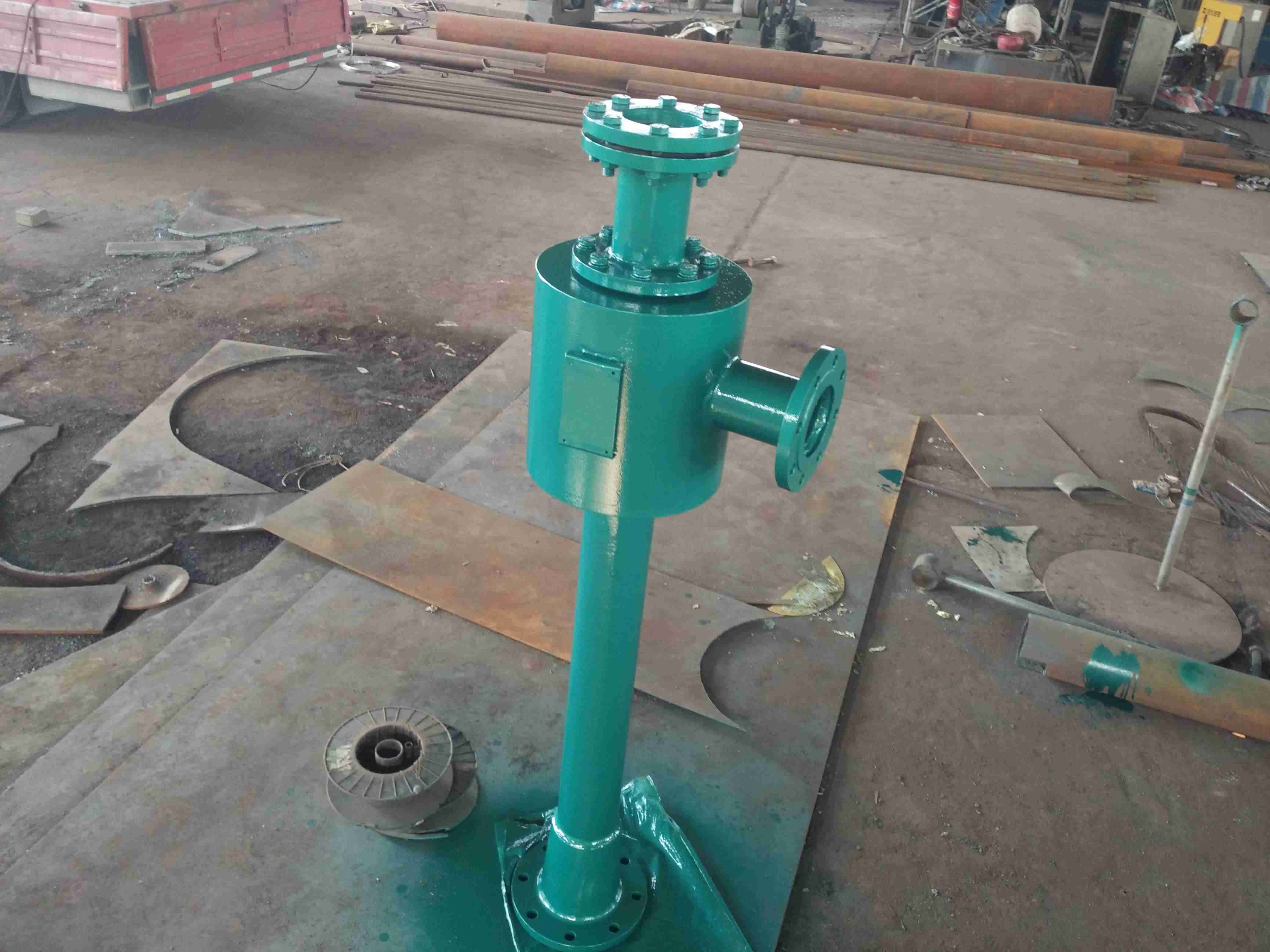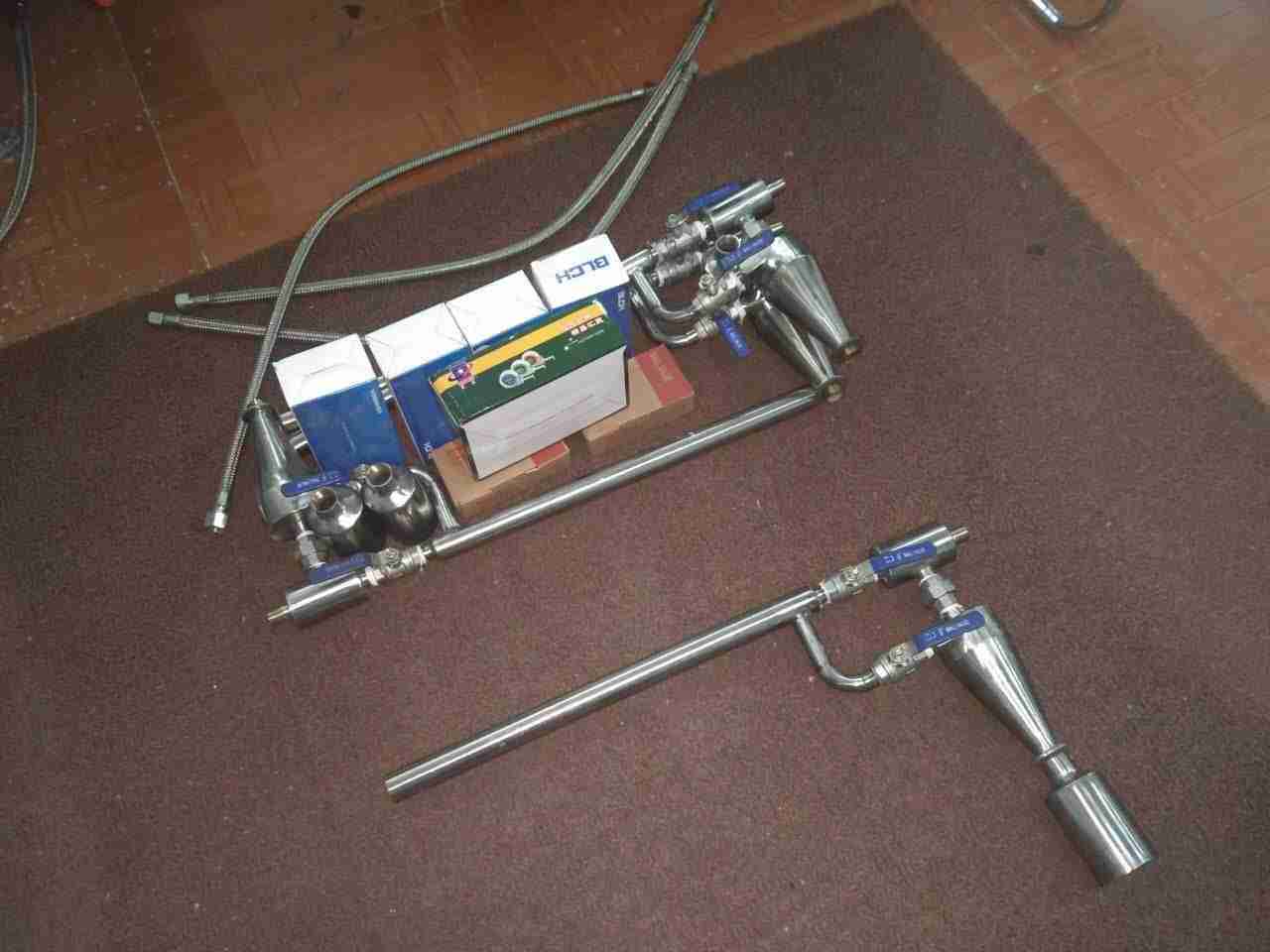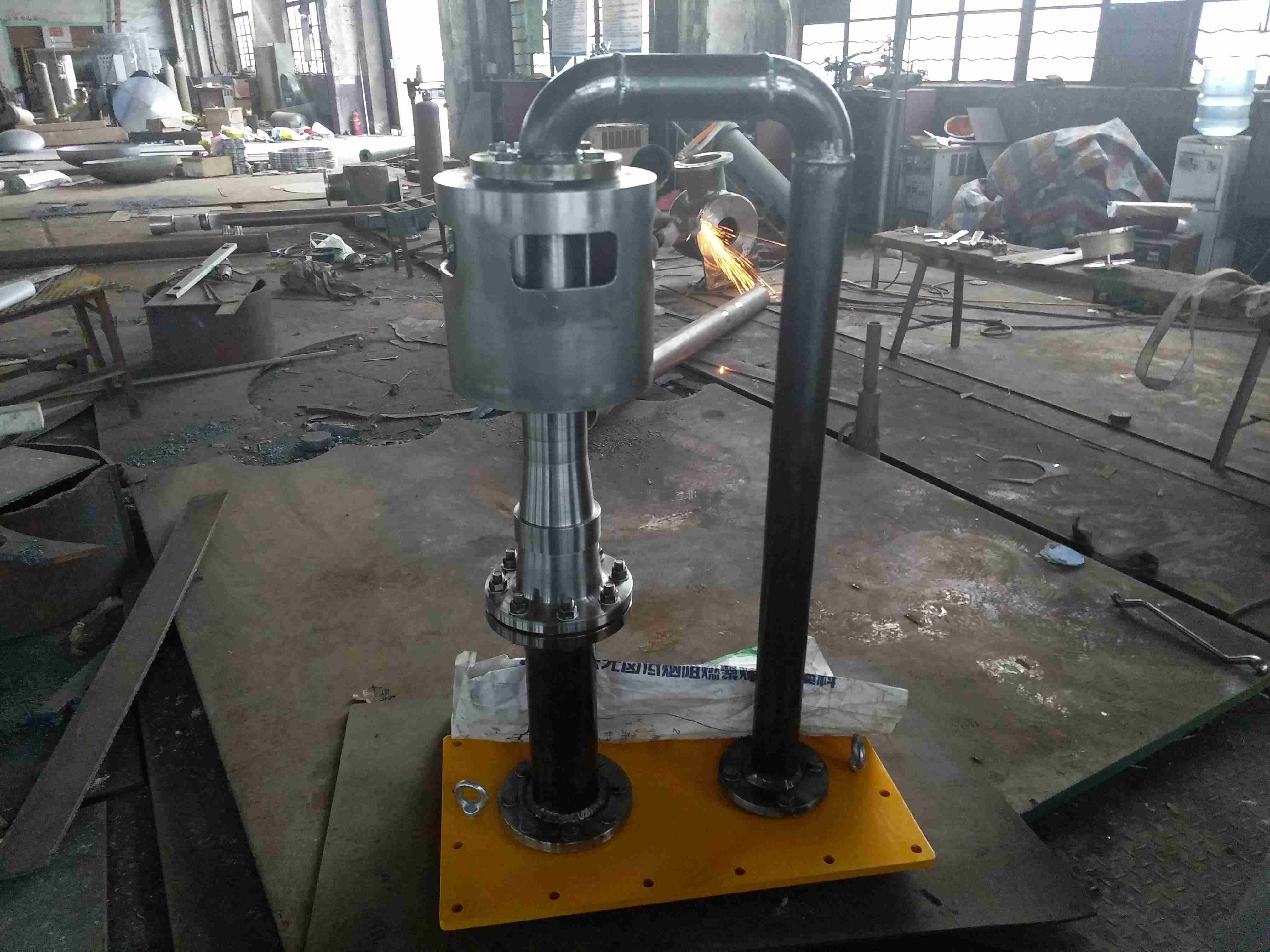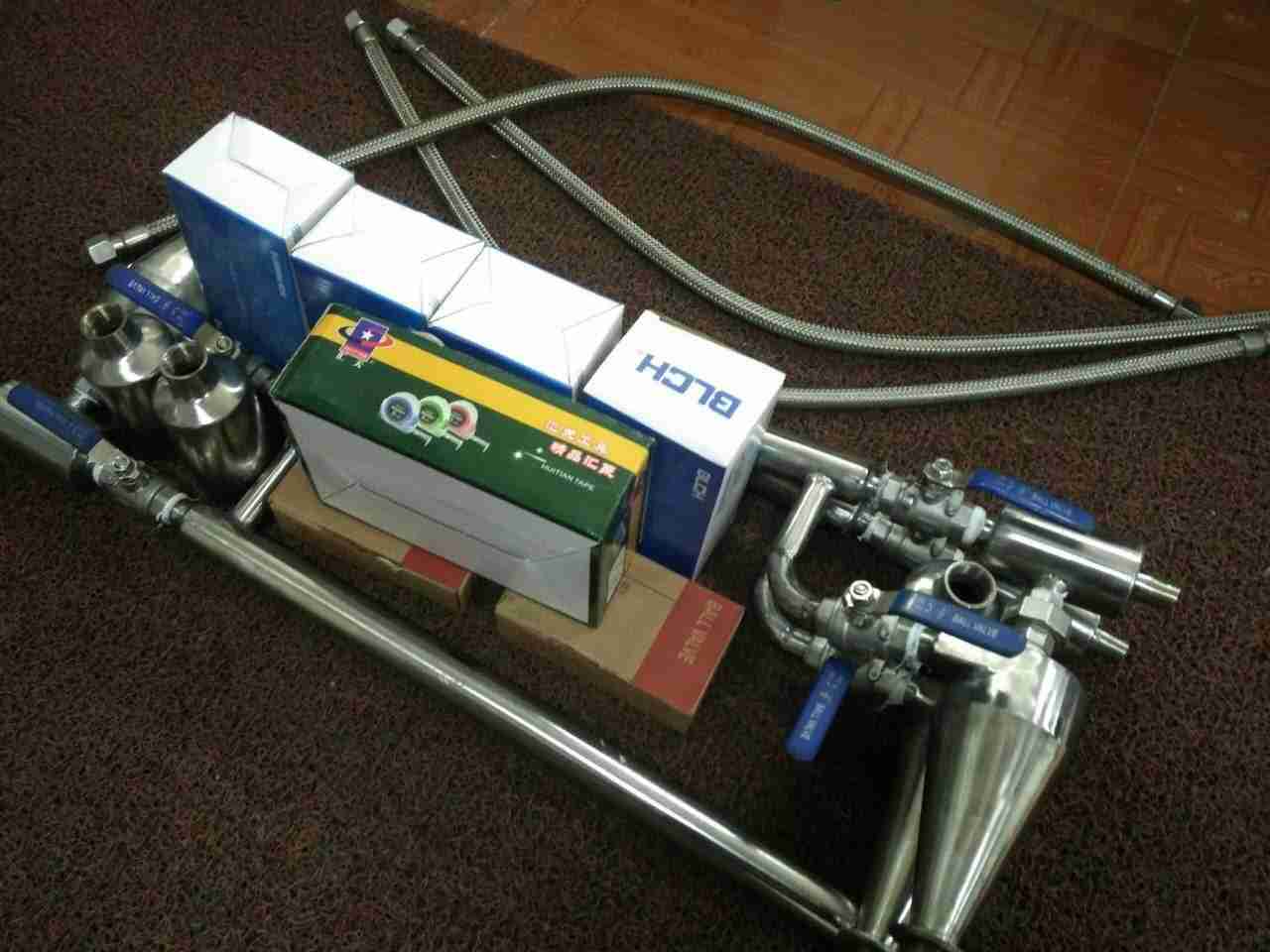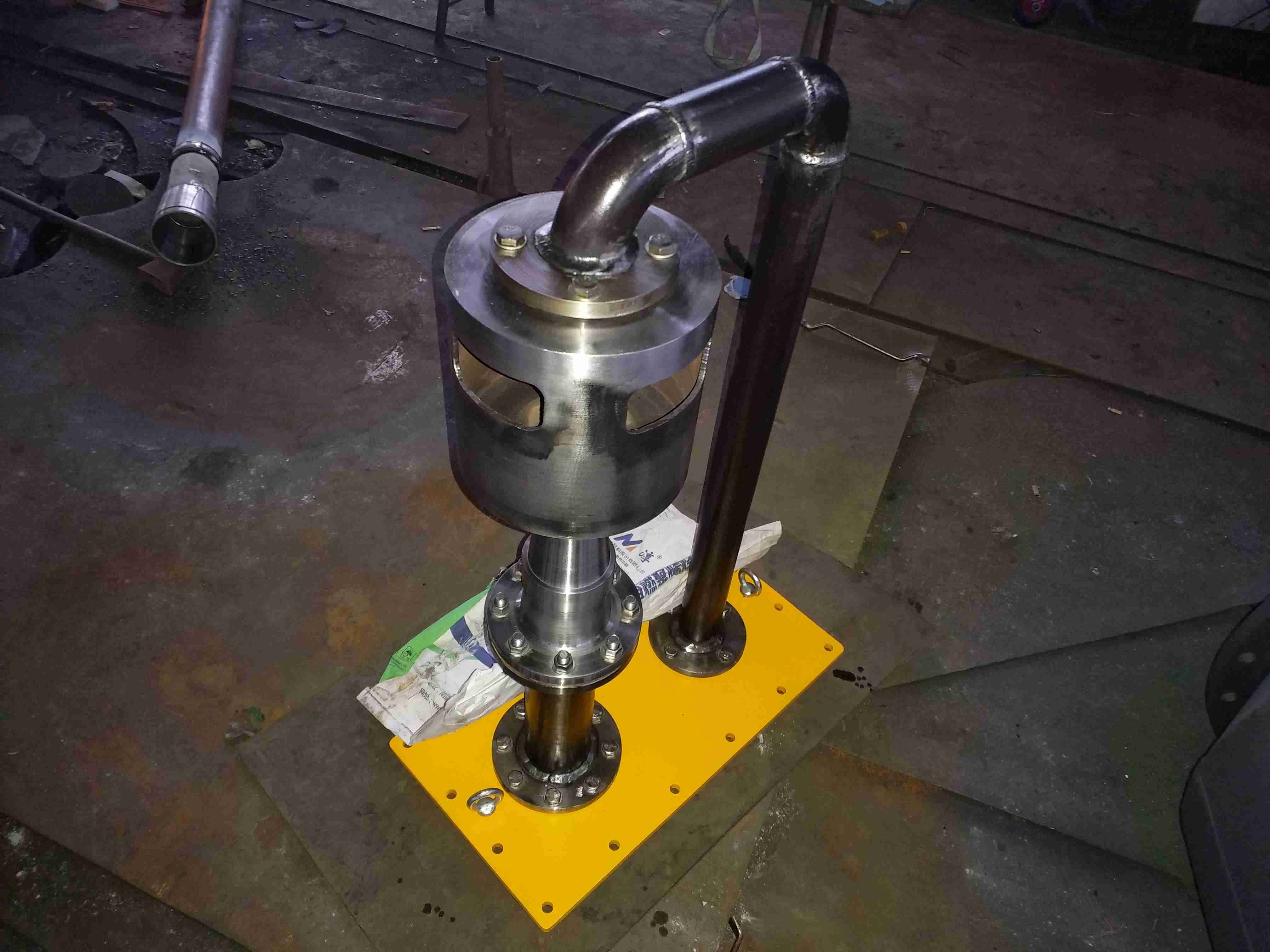The self regulating liquid level control device for gas-liquid two-phase flow is based on the principle of gas-liquid two-phase flow. The two-phase flow drainage controller is suitable for liquid level control of various heat exchangers and expanders in enterprises such as power, chemical, petroleum, and metallurgy, in order to achieve safe operation of equipment and energy conservation and consumption reduction. It is a replacement of the transmission and drainage regulator.
The floating ball, pneumatic, and electric water level control devices used for transmission are complex and operate frequently, causing problems such as jamming, leakage, water level operation, and severe erosion of drainage pipelines. Therefore, the failure rate is high, the reliability is poor, and not only does it require a large amount of maintenance and repair work, but it also reduces the turbine rate, affecting the economic efficiency of the unit. The implementation of the self regulating liquid level control device for gas-liquid two-phase flow has effectively addressed this issue. It utilizes the principle of 銀行卡gas-liquid two-phase flow銀行卡 to continuously and automatically adjust the water level, abandoning the mechanical and electrical control components of the transmission water level controller. Any moving components themselves effectively overcome the faults of the transmission water level controller, thus solving the problem of water level control. Due to its outstanding thinking, advanced principles, and simple application, it has been widely praised by users. This product has undergone extensive industrial applications and has achieved good results, and has passed appraisal and acceptance- Jiazhi believes that the device is intelligent, with a simple working principle, strong self adjustment ability, and stable liquid level control. The device has a small volume, fewer components, and a simple structure and system. The mechanical moving parts and electrical components make it reliable and safe. It is easy to install and is not only suitable for the modification of equipment water level automatic control devices, but also suitable for corrosive environments and media, and has a wide range of applications. There are economic benefits of energy conservation and consumption reduction, reliable technology, and other liquid level automatic control devices inside.
The automatic liquid level controller for gas-liquid two-phase flow is suitable for water control of pressure vessels in the power industry, such as high and low pressure heaters, continuous discharge flash tanks, raw water heaters, heating network heaters, and pressure vessels; It is also applicable for water level control of various containers in the petroleum, chemical, and steel industries.
Self regulating liquid level controller for gas-liquid two-phase flow - Siying, working principle - inlet, strong self regulating ability, stable liquid level control- Mechanical moving parts, electrical components, and small size make the structure and system simple, easy to install, and safe and reliable.
The application of a self regulating liquid level controller for gas-liquid two-phase flow significantly reduces the workload of on-site maintenance and operation, saves maintenance costs, and reduces labor intensity. Secondly, due to the lack of pneumatic and electric thermal control systems and complex thermal auxiliary equipment in the self regulating liquid level controller for gas-liquid two-phase flow, maintenance personnel are reduced, greatly improving the operational management level of the equipment. Users refer to it as maintenance equipment.
The self regulating liquid level control device for gas-liquid two-phase flow is as follows:
1. - It is now automatically and continuously adjustable, with strong self adjustment ability and relatively stable liquid level.
2. Production - any moving parts, mechanical and electrical transmission devices, design principles - advanced, reliable -, not affected by external interference, strong anti-interference ability, high safety performance.
3. Adopting a fully enclosed structure and production discharge. The structure and system are simple and easy to maintain and repair on site. Meet the long-term operational needs of the equipment.
4. Easy to install and construct, easy to renovate old equipment, and combined with on-site design. The valve core is made of stainless steel, which is corrosion-resistant, wear-resistant, and long-lasting.
5. - Grid or proximity transmission level regulator, far from the same type of production.
Scope of application of the self regulating liquid level controller device for gas-liquid two-phase flow:
This product is suitable for high and low pressure heaters in the power industry, as well as continuous discharge expansion containers; Water level control of pressure vessels such as heating network heaters and shaft seal heaters
Liquid level control of reaction vessels, flash tanks, and flash tanks in the chemical industry.
Simultaneously applicable for liquid level control of various containers in departments such as petroleum, steel and metallurgy.
User feedback
After applying the self regulating liquid level control device for gas-liquid two-phase flow, the workload of on-site maintenance and operation has been significantly reduced, saving maintenance costs and reducing labor intensity. Secondly, due to the lack of pneumatic and electric thermal control systems and complex thermal auxiliary equipment in the self regulating liquid level control device for gas-liquid two-phase flow, maintenance personnel are reduced, greatly improving the operational management level of the equipment. Users refer to it as maintenance equipment. The conventional water level controller of the heater in thermal power plants frequently malfunctions. After using the self regulating liquid level control device for gas-liquid two-phase flow on site, the above problems have been effectively solved, saving a lot of energy and bringing social and economic benefits
Energy saving - result analysis and calculation
To analyze the energy-saving effects of technology, we can conduct theoretical calculations and comparisons based on the different water levels of the heaters in the following power plants.
Taking the N100-90/535G generator set with inverted spiral tube JG-350-6 high-pressure heater as an example:
Heat transfer area F=350M2
Heat transfer coefficient K=3400w/m2 ℃
Horizontal average specific heat capacity Cw=4.6KJ/kg ℃
(-) Calculate separately for different water level states:
Water supply outlet temperature t2=?
Hydrophobic outlet enthalpy H2=?
1. Positive water level status of gas vapor liquid two-phase flow self regulating liquid level controller device
(1) H2=1008.4KJ/kg: (According to the steam pressure Ps=3.00Mpa, check the steam water quality chart to obtain)
(2) T2 is determined by the formula t2=Ts - (Ts t1) e-NTV
Its -: Ts=233.84 ℃ → steam saturation temperature (refer to the table)
Number of heat transfer units NTV=KF/(G) (1000 × Cw)=3400 × 350/108.3 (1000 × 4.6)=2.3886
T2=233.84- (233.84-198.7) e-2.3886
=230.54 (℃)
2. Low and low water level conditions of the self regulating liquid level controller device for gas-liquid two-phase flow
At this point, there is a strict two-phase flow of steam and liquid in the drainage pipe. If the proportion of steam loss is assumed to be r=10%, other parameter changes are ignored.
(1) H'2
Check the soda water quality table for H2 steam=280.19KJ/kg (saturated steam enthalpy); H2 water=1008.4KJ/kg (saturated water enthalpy)
H'2=r × H2 vapor+(1-r) × H2 water=0.1 × 280.1.9+(1-0.1) 1008.4=1187.75 (KJ/Kg)
(2) T'2
From Q=G × Cw (t2-t1) × one thousand
T'2=[Q/ × (Cw) × 1000)+t1
Its - Q=D (H1-H'2) × 1000=6.031 (3212.322-1187.75)=12.21 × 1000 (kw)
So t'2=[12.21] × 1000/(108.3 × 4.6)+197.90=222.41 (℃)
3. Comparison results of gas vapor liquid two-phase flow self regulating liquid level controller devices
(-) The positive water level state is lower than the low and negative water level states
Increase in feed water temperature and zt=230.54-222.41=8.13 (℃)
Energy loss reduction Q=D (H'2-H2)=6.031 (1187.75-1008.4)=1081.66 (KJ/s)
(2) Energy saving - result analysis
Energy saving calculation for a single heater
Based on the above results, if the high pressure heater is operated for 8000 hours per year, the low positive water level operation ratio of the heater can reduce energy loss by 1081.66 × eight thousand × 3600=31111808000 (KJ)
Converted to standard coal of 6000kar/kg, annual coal savings of 31151808000/(6000) × 4.18)=1242.10 (tons)
Annual cost savings calculated at 300.00 yuan per ton of coal 1242.10 × 300.00=372600 yuan
Each kWh of electricity can save 1242.10 coal × 1000000/(100000) × 8000=1.5526 (grams)
Technology of Self regulating Liquid Level Controller for Gas Vapor Liquid Two Phase Flow--
1. The liquid level is self regulating and stable. Due to the fact that the device can automatically and continuously adjust the liquid level under various operating conditions of the unit, the liquid level is in a relatively stable state.
2. Safe and reliable - high- Any mechanical moving parts and electric transmission control system are reliable and safe.
3- Long. The valve core is made of high-quality stainless steel material, which corrodes at high temperatures and can meet the long-term operation of the equipment.
4- Maintenance- Basic maintenance is required after installation and use.
The principle of using gas-liquid two-phase flow:
1. The self regulating liquid level controller device for gas-liquid two-phase flow is a type of water level controller designed based on the principle of 銀行卡gas-liquid two-phase flow銀行卡, which uses the self regulating of gas-liquid changes to control the liquid at the outlet of the container. Abandoning the shortcomings of traditional float, pneumatic, and electric liquid level control equipment, it automatically adjusts the flow rate of the liquid at the outlet of the container, thereby achieving a stable liquid level. The basic principle is that the drainage enters the valve chamber from the inlet of the valve body, and the phase change tube (signal tube) collects vapor and liquid phase signals based on the liquid level and directly enters the valve chamber. After being combined with the drainage, it flows through the designed throat. When the liquid level rises, the vapor phase signal decreases, resulting in an increase in the drainage flow rate; When the liquid level drops, the vapor phase signal increases, reducing the flow area at the throat and decreasing the drainage flow rate, achieving the goal of obstructing drainage.
The improved gas vapor liquid two-phase flow self regulating liquid level controller device reduces the steam balance pipe, water balance pipe, and signal cylinder, and replaces them with a signal pipe, simplifying the structure on the original basis and facilitating on-site construction and maintenance-- What is needed is to cancel the steam balance pipe and water balance pipe, directly reflect the true water level from the heater, avoid false water level caused by improper installation of steam balance pipe and water balance pipe, improve the anti-interference ability and regulation degree of the controller, reduce the opening on the pressure vessel, improve the safety and reliability of the system, and reduce the amount of construction work. Therefore, the self regulating liquid level control device for gas-liquid two-phase flow is an improved type of production that has undergone further scientific research and combined with on-site conditions, and has the ability to meet on-site conditions.
2. The self regulating liquid level controller for gas-liquid two-phase flow is a fully conceptual liquid level controller designed based on fluid mechanics theory and control principles, utilizing the flow of gas-liquid two-phase flow. It belongs to self operated intelligent regulation and requires a small amount of steam (about 1-2% of the displacement) as the driving force of the machine. The liquid level controller consists of two parts: a regulator (labeled 4 in Figure -) and a signal tube (labeled 2 in Figure -). The connection system of the controller on the heater of the thermal power plant is shown in the figure. The function of the signal tube is to send water level signals and transmit regulating steam; The function of the regulator is to control the outlet water volume, which is equivalent to the automatic regulation system. The regulating principle is that when the water level of the heater rises, the water level in the signal tube also rises, resulting in a decrease in the amount of regulating steam sent. As a result, the amount of steam flowing through the regulator two-phase flow decreases and the amount of water increases, leading to a decrease in the water level of the heater. The opposite is also true. Thus, automatic control of the water level of the heater has been achieved.
Installation and debugging:
(-) Installation of self regulating liquid level controller for gas-liquid two-phase flow
1. The transmitter must be vertical, and the upper branch pipe should be connected to the heater steam balance pipe. The lower branch pipe should be connected to the heater horizontal balance pipe.
2. The steam balance pipe should be connected to the heater at a low water level when the heating connecting pipe is above the warning water level.
3. Adjuster - placed horizontally. Different situations may also be placed vertically. Install in the direction of heated water outlet as much as possible.
4. Whether it is the transmission or adjusting the connection, the shorter the connecting pipe, the fewer the bends.
(2) Debugging of self regulating liquid level controller for gas-liquid two-phase flow
(1) Open various valves on each drainage pipeline and check if the water level gauge and water level controller are sensitive.
(2) The drainage capacity of the heating pipeline must be maintained at - high load.
(3) When debugging two or more water level controllers in a chain, proceed from high pressure to low pressure in sequence.
(4) Chain debugging bypass valve 5, regulating valve 4, slowly raise the water level to positive water level, then open regulating valve 4. Observe the water level and continue to use regulating valve 4 to close and gradually adjust until the water level can automatically maintain a stable state.
(5) If there is full water during the height process, the bypass valve 7 can be opened appropriately.
Design and working principle of a self regulating liquid level controller for gas-vapor-liquid two-phase flow
-Manufacturing: The device consists of two parts: a transmitter (signal cylinder) and a control device.
The function of the transmitter is to send water level signals inside the container and to transmit and regulate the amount of steam or liquid used.
Control device: controls the water level inside the container.
Working principle: When the water level of the heater rises, the liquid level sensor sends a signal to reduce the amount of gas in the container, reducing the amount of steam flowing through the control device, increasing the outlet drainage, and causing the water level in the heater to decrease accordingly. The opposite is also true. Thus, automatic control of the water level of the heater has been achieved.
-Special specifications can be arranged separately according to user needs for design schemes! Interested parties contact us!
Instructions for ordering self regulating liquid level controllers for gas-liquid two-phase flow:
1. What equipment does the user provide for the matching gas-liquid two-phase flow device, as well as parameters such as pressure, temperature, and outlet pipe diameter.
2. Provide various connection systems - flanges, with sizes for connecting pipes.
Order Notice
1. Steam pressure of heater (MPa):
2. Steam temperature of heater (℃):
3. Steam flow rate of heater (t/h):
4. Heater drainage capacity (- when large, t/h):
5. Heater drain pipe diameter (mm):
6. Final - High pressure heater drain to deaerator height (m):
7. Deaerator pressure (MPa):
Steam liquid two-phase flow, steam liquid two-phase flow drain valve, steam liquid two-phase flow self regulating liquid level controller, self regulating liquid level control device, two-phase flow self regulating liquid level controller production specifications and models
Specification and model | Connecting pipe diameter | Applicable Units | Valve core material |
| YWQ-50 | DN50 | 100MW以下 | 1Cr18Ni9Ti |
| YWQ-80 | DN80 | 100MW以下 |
| YWQ-100 | DN100 | 100MW以下 |
| YWQ-125 | DN125 | 100MW-200MW |
| YWQ-150 | DN150 | 100MW-200MW |
| YWQ-200 | DN200 | 300MW |
| YWQ-250 | DN250 | 300-600MW |






